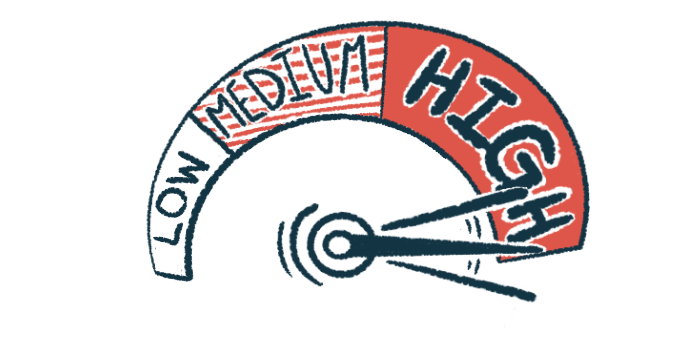Risk of PH in early childhood higher in babies born preterm: Study
PH nearly 70 times more likely for severely premature infants

Babies born preterm, or before 37 weeks of pregnancy, were shown to have a higher risk of developing pulmonary hypertension (PH), primarily between the ages of 1 and 3, according to a study in Sweden.
Moreover, that risk was seen to increase as the length of the pregnancy decreased, with infants with the youngest gestational ages at birth — those born earlier than 28 weeks of pregnancy — nearly 70 times more likely to develop PH in early childhood.
“Although absolute risks were very small, gestational age at birth adds clinically relevant information for cardiovascular risk assessment in children born preterm,” the researchers wrote.
The team stressed, however, that these findings were linked only with “persisting and/or incident pulmonary hypertension in early childhood,” noting that they “could not detect an association between preterm birth and increased risk of PH diagnosed in later childhood or early adulthood.”
The study, “Severity of preterm birth and the risk of pulmonary hypertension in childhood: A population-based cohort study in Sweden,” was published in the journal Paediatric and Perinatal Epidemiology.
Investigating impact of premature birth in later PH
PH is a chronic and progressive disease characterized by high blood pressure in the pulmonary arteries — the blood vessels that supply the lungs.
The condition is different in youth versus adults, as disease mechanisms in children are linked to lung development and the circumstances surrounding the child’s birth. Although congenital malformations, or birth defects, are linked to PH, preterm infants may develop the disease after birth independently of such issues.
“However, the relative contribution of the severity of preterm birth to the risk of pulmonary hypertension has not been investigated,” the researchers wrote.
Here, a team of scientists from Sweden hypothesized that an earlier gestational age at birth — which refers to how far along in weeks a pregnancy has advanced since the mother’s last menstrual period — may be linked to an increased risk for PH later in childhood and young adulthood.
To test this, the team analyzed data from the Swedish national health registers, which included 3,142,182 individuals born in the country between 1987 and 2016. Participants were followed from 1 year of age until their PH diagnosis, death, emigration, or through the end of 2017.
Of the participants included, 5.8% were born preterm, or before the 37-week mark. The vast majority — 5.1% of these babies — were classified as moderately preterm, having been born between 32 and 36 weeks of pregnancy. A total of 0.6% were very preterm, born between 28 and 31 weeks of pregnancy, while 0.2% were extremely preterm, with their birth occurring earlier than 28 weeks of pregnancy.
So-called early-term births — at 37 to 38 weeks of pregnancy — accounted for 18.8% of the participants.
Almost half of the extremely preterm babies were found to have bronchopulmonary dysplasia, a well-known complication in such early births that results from an infant’s lungs not being fully developed. About one-quarter had a heart defect.
PH more common in babies born preterm, or to older mothers
The researchers identified 543 cases of PH, corresponding to an incidence — the occurrence of new cases — of 1.2 per 100,000 person-years. Person-years consider the number of people in a study as well as the amount of time they spent in the study.
After excluding cases with congenital malformations, PH was found to affect 153 individuals during follow-up, with an incidence of 0.36 per 100,000 person-years. Patients with malformations accounted for 71.8% of the total PH cases.
PH also was more common in those born to mothers ages 35 or older and those born outside of Sweden or other Nordic countries. The rate also was higher among babies born to mothers having preeclampsia — defined as a sudden increase in blood pressure after week 20 of pregnancy — diabetes during pregnancy, or having multiple pregnancies. Smoking during pregnancy was associated with a lower incidence of PH in the offspring.
Compared with so-called term infants, or those born at 39 weeks, babies born preterm had a higher risk of developing PH. The risk increased 3.42 times in those born moderately preterm, almost 14 times in those born very preterm, and about 68 times for those born extremely preterm. Also, children born early-term were found to have a 1.74 times higher risk of developing PH.
We found that the risk of pulmonary hypertension in childhood increased with decreasing gestational age.
The incidence rate was particularly high in the child’s earliest years, as compared with older age, and among those born without congenital malformations.
“Overall, gestational age-related risk increase was most visible during the first two first years of follow-up (1 to [nearly] 3 years of age),” the researchers wrote.
“We found that the risk of pulmonary hypertension in childhood increased with decreasing gestational age,” they added, noting that “extremely preterm-born infants displayed the highest risk increase, an association strengthened after excluding individuals with congenital malformations.”
The researchers, however, could not find a link between preterm birth and a higher risk of PH in later childhood or early adulthood.
When analyzing the group without congenital malformations, the risk of developing PH increased significantly among those born extremely preterm, while decreasing among participants born very preterm. For children born moderately preterm or early-term, no association with PH risk was found.
Overall, extremely preterm birth was associated with 90 additional PH cases per 100,000 person-years compared with those born full-term, and 50 more cases after excluding those born with malformations.
Children born very small for gestational age, which considers gestational age and sex, were at a nearly twofold higher risk of developing PH.
The team said their findings add to the data on cardiovascular risks in childhood.
“The magnitude of the observed risk elevation may be of both clinical importance and of relevance to continued research on the cardiovascular consequences of preterm birth, including long-term effects on the pulmonary vascular system,” the researchers noted, adding, however, that “pulmonary hypertension is a very unusual condition, and reported associations should be interpreted with this in mind.”









